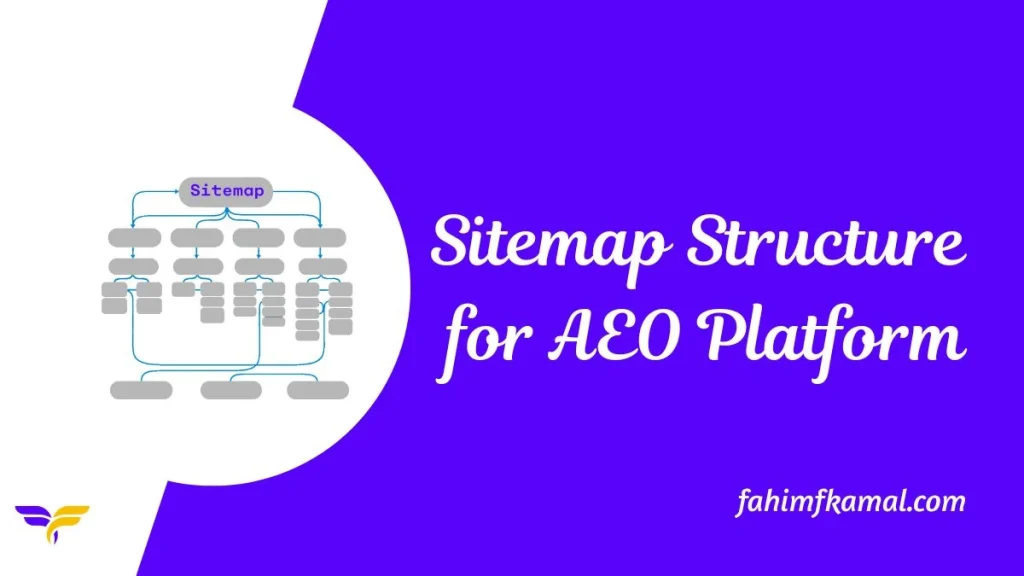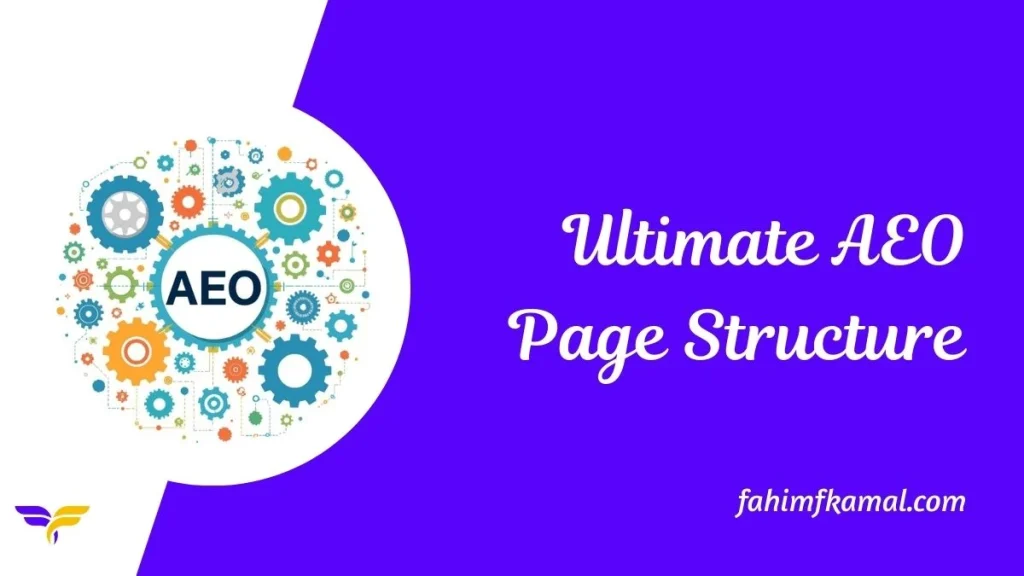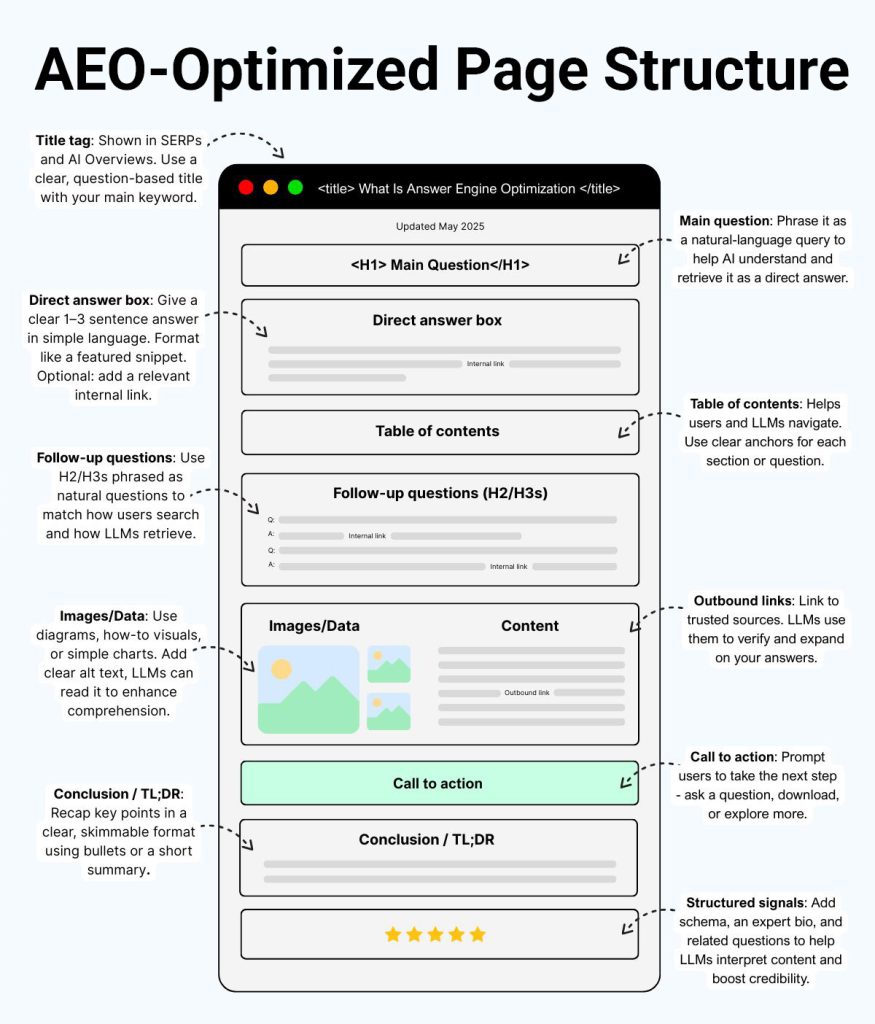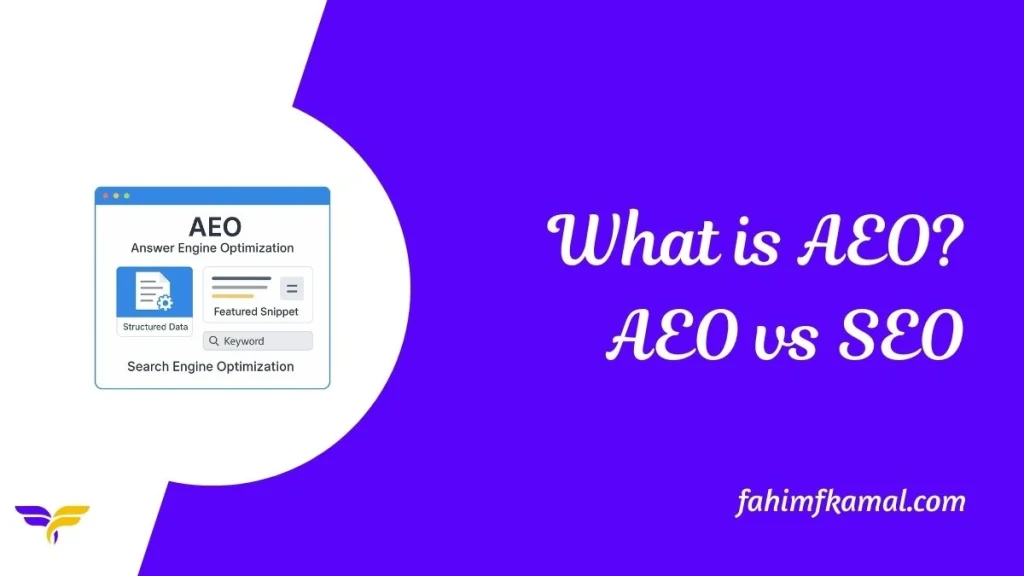How to Structure a Sitemap for an AEO Platform?
A sitemap structure for an AEO platform organizes pages so search engines and answer engines can read them clearly. It uses structured data, logical order, and schema markup to improve visibility and indexing. This helps users find accurate answers faster.
A well-built sitemap structure for an AEO platform makes it easier for search engines to crawl your website. A clear AEO page structure organizes pages logically, helping answer engines and voice assistants find content fast. This improves indexing, visibility, and organic traffic while keeping users connected with accurate information.
What is a Sitemap?
A sitemap is a file that lists the important pages of your website. It helps search engines understand your site’s structure and find content faster. A clear sitemap improves visibility, supports indexing, and connects users with accurate information through search results.
What is an XML Sitemap?
An XML sitemap is a file written in a special format that search engines can read. It shows the structure of your website and the relationship between pages. By using XML sitemaps, search engines can index your content types faster and display them in search results.
Why Does Your AEO Platform Need an XML Sitemap?
An XML sitemap helps answer engines and search engines crawl your website with better efficiency. It ensures quick indexing of dynamic pages, faq sections, and related content. This improves search visibility and supports features like featured snippets, AI summaries, and voice search.
Best Practices for Sitemap Structure for an AEO Platform
- Use XML + Optional JSON-LD / AI-Friendly Sitemap
- Create the main sitemap in XML format following the standard protocol.
- Optionally, add a JSON-LD or “AI sitemap” for systems that prefer machine-readable context.
- Include Only Indexable, High-Value Pages
- Do not list pages with noindex, redirects, or thin content.
- Focus on pages that answer questions, FAQs, guides, and product info—places where AEO works best.
- Add Metadata to Signal Freshness & Priority
- Use the <lastmod> tag so AI tools know when the content changed.
- Optionally include change frequency or priority tags for pages with high-answer content.
- Separate Sitemaps by Content Type or Topic
- Create separate sitemap files for FAQs, blog posts, products, and services.
- Use a sitemap index to connect them. This helps AI and search engines find content faster.
- Ensure Machine-Readable Structure
- Add schema or structured data for pages (FAQ schema, HowTo schema, Article schema).
- Use clear heading hierarchies (H1, H2, H3) and short answer blocks under headings.
- Optimize Technical Aspects
- Ensure the sitemap is UTF-8 encoded, in correct format, and accessible under a stable URL (like /sitemap.xml).
- Place it in the root directory and update it automatically when content changes.
- Monitor & Maintain
- Regularly check the sitemap for broken links, removed pages, or duplicates.
- Validate structured data and sitemap status using tools like Google Search Console.
How to Create and Maintain an XML Sitemap
You can create a sitemap manually or use automated tools. Manual creation gives full control, while plugins or AI tools save time and reduce errors.
It is important to use trusted tools that follow the sitemap structure for an AEO platform. Popular tools include Yoast SEO, Rank Math, Screaming Frog, Google XML Sitemaps, and AIOSEO. These help generate sitemaps for blog posts, service pages, and other content types.
Regular updates keep search engines and answer engines informed. Always review the sitemap after adding new pages, updating content, or changing page structure.
Submitting Your Sitemap to Search Engines
You can submit your sitemap using Google Search Console to ensure search engines index your pages quickly. Add the sitemap URL in the “Sitemaps” section for monitoring.
Include a reference to the sitemap in your robots.txt file. This helps machines and voice assistants find your content faster.
After submission, monitor the sitemap for errors or indexing issues. Use tools to check broken links, missing pages, or invalid structured data.
FAQs
1. What are the different types of sitemaps in SEO?
There are several types, including XML sitemaps, HTML sitemaps, video sitemaps, image sitemaps, RSS sitemaps, news sitemaps, etc. Each helps search engines and answer engines index specific content efficiently.
2. Do sitemaps improve SEO?
Yes. Sitemaps guide search engines and AI models to your pages. They improve indexing, help with featured snippets, and increase organic traffic by making content easier to find.
3. How does a sitemap work?
A sitemap lists important pages and shows their relationships. Search engines read this file to understand your website structure, content types, and update frequency, which improves visibility in search results.
4. How often should I update my sitemap?
Update your sitemap whenever you add, remove, or change pages. Dynamic content, FAQs, and blog posts require more frequent updates to keep search engines and answer engines informed.
5. What are the size limitations for XML sitemaps?
An XML sitemap can list up to 50,000 URLs or 50MB uncompressed. Large sites may need multiple sitemaps connected through a sitemap index for proper indexing.
TL;DR Summary
- A sitemap structure for an AEO platform helps search engines and answer engines crawl your pages efficiently.
- Use XML sitemaps with schema markup for blog posts, service pages, and FAQs.
- Regular updates and monitoring keep content visible and accurate in search results.
- Separate sitemaps by content type, add metadata, and use trusted tools for generation.
A well-planned sitemap structure for an AEO platform improves indexing, enhances visibility, and ensures users and machines find accurate information quickly.

Fahim Foysal Kamal is a dedicated Local SEO Specialist based in Sylhet, Bangladesh. His work focuses on enhancing online visibility for small businesses and e-commerce platforms. This includes leveraging the latest trends like AEO and GEO. The services he provides include Google Business Profile optimization, local keyword research, on-page SEO, and technical SEO. His main passion is helping businesses grow by improving their search rankings and online presence.
How to Structure a Sitemap for an AEO Platform? Read More »



